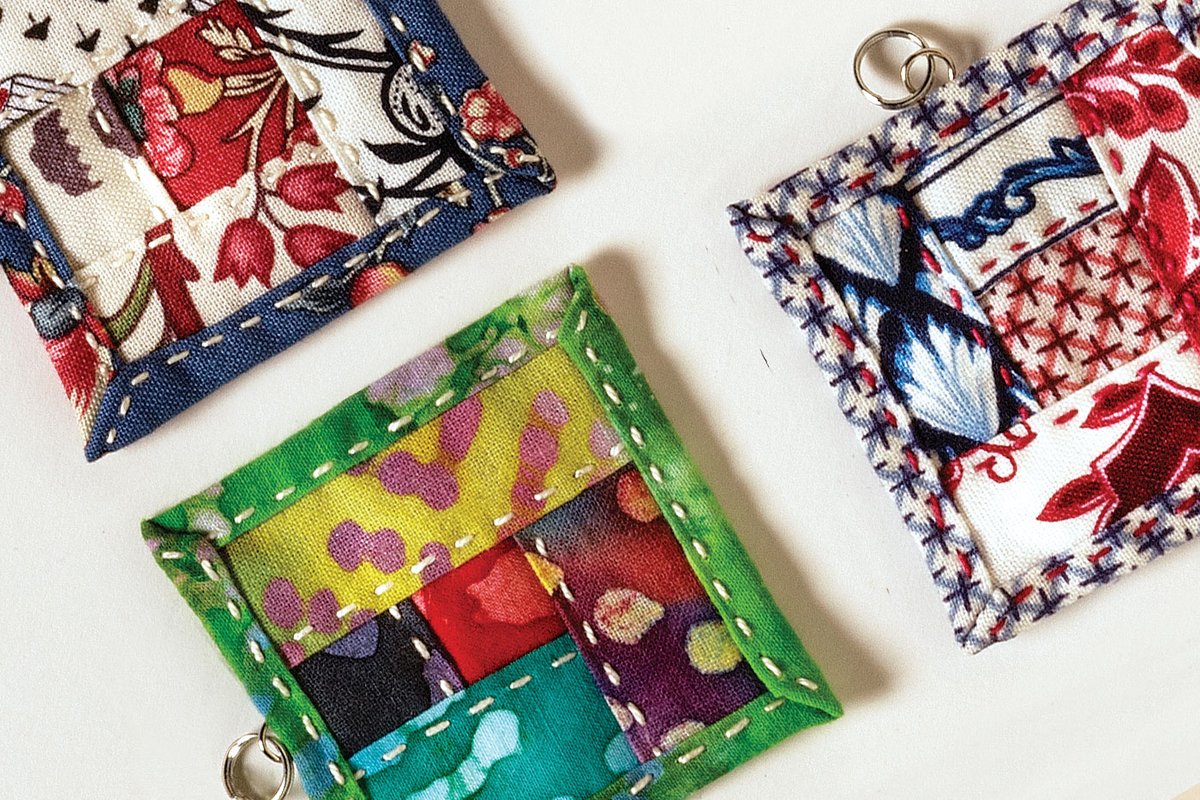
Wear the Square
African American quilts are the inspiration for easy-to-sew pendants
Visitors to the Abby Aldrich Rockefeller Folk Art Museum are treated to a colorful display of intricate quilts that date as far back as 1875.
The log-cabin technique that 19th-century seamstress Anna “Jane” Parker used in her quilt inspired Assistant Manager of Museum Education Christina Westenberger to create a pendant using the same process.
After you get a feel for this special method by creating a pendant of your own, be sure to see the quilts on display.
What You Need
- Ribbon, Chain or String for Hanging
- Needle
- 2”x2” Square
- Four 2”x1” Rectangles
- Cotton
Batting (2”x2”) - 3”x3” Square
- Eye Hook & Split Ring
- Scissors
- Ruler
- Pins
- Pearl Cotton Thread
The Process
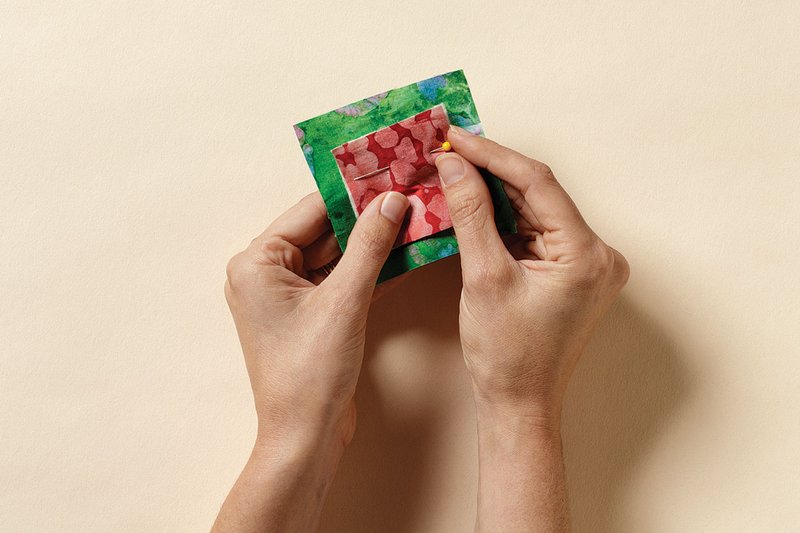
Step 1
Place the 3"x3" square right side down and layer the cotton batting and the 2"x2" square in the very center. Pin in place.
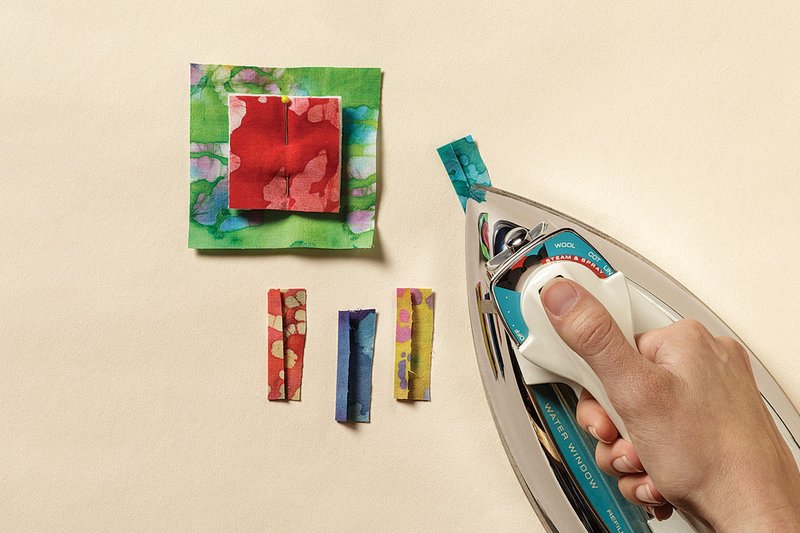
Step 2
On the long edge of each strip, fold over ¼" and iron. Place each strip onto the 2"x2" square. The raw edge of each strip should meet the raw edge of the 2"x2" square. There should be a visible square of the 2"x2" fabric in the center. If you would like to see more of that square, trim the raw edges of the strips.
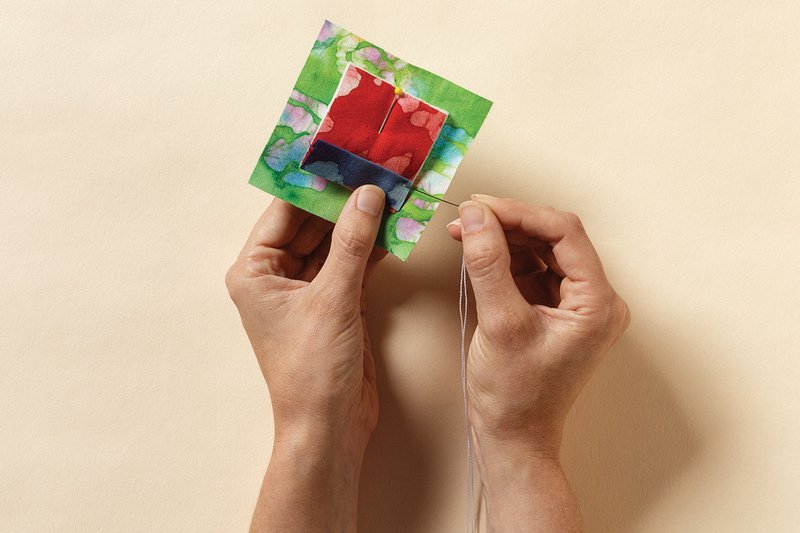
Step 3
To begin stitching, cut a length of pearl cotton, knot the end and hide the knot in the batting layer as you begin top-stitching along the folded edge of the first strip.
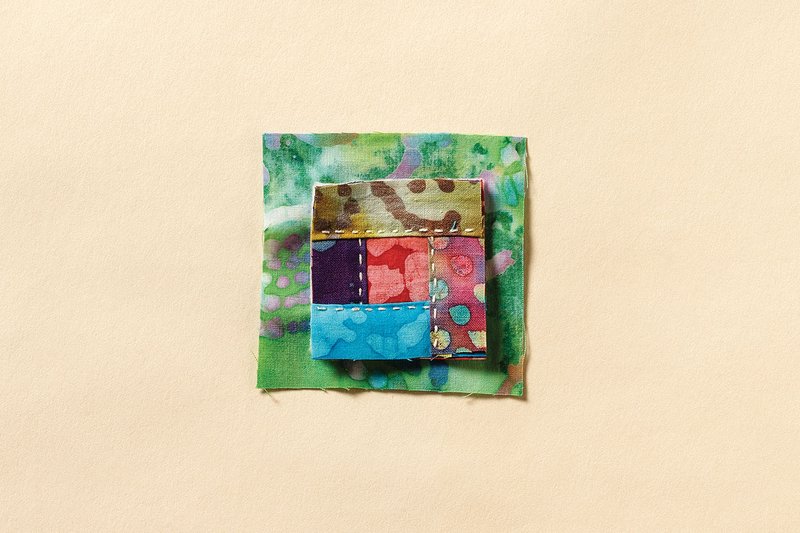
Step 4
Repeat with the second, third and fourth strips.
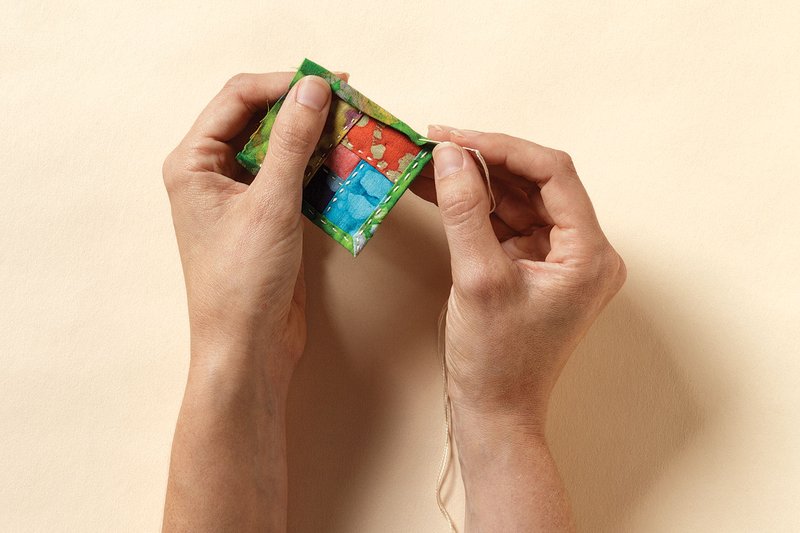
Step 5
To bind the edges of your pendant, fold the raw edge of the 3"x3" backing fabric to the raw edge of the 2"x2" center fabric, then fold over again and top-stitch through all layers. To eliminate wrinkles, fold, pin and stitch each side rather than pinning all sides at once. To miter a corner: Fold corner diagonally toward the raw edge of the 2"x2" square and match raw edge to raw edge and fold over.
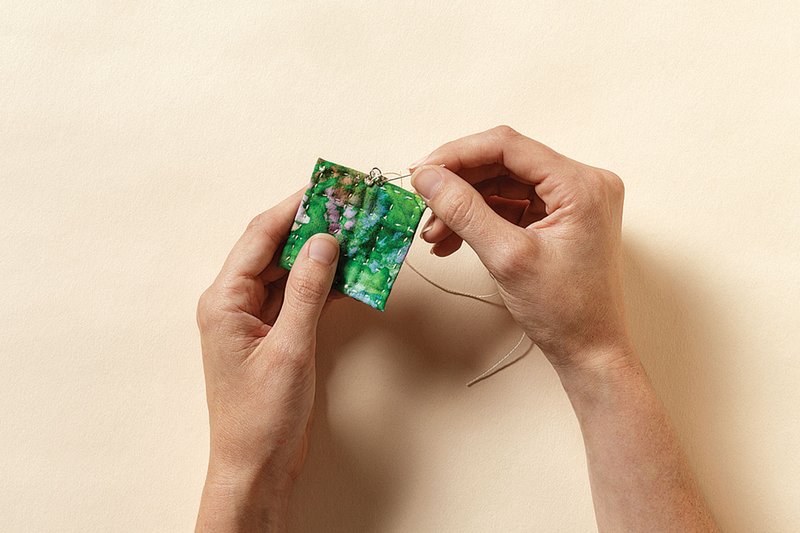
Step 6
Place a split ring on the center of an eye from a hook-and-eye set and stitch in place at the top center of your pendant. Add a ribbon or a chain to wear your mini-quilt.
More from this Issue

